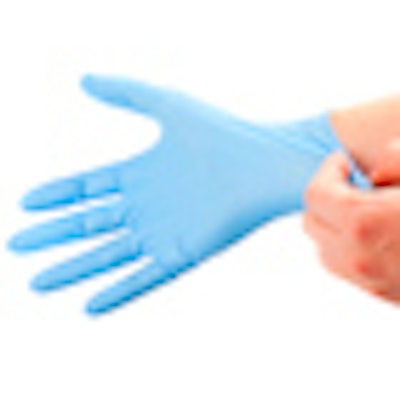
Many of us spend more time contemplating the dessert menu at restaurants than choosing our medical gloves for critical barrier protection. That's understandable considering the overwhelming number of options available. One purchasing guide I reviewed listed 22 different types in their glove line, ranging in price from $6.95 to $13.50 a box.
Warning: The short-term savings are not worth the long-term harm of an improper fit. The wrong gloves lead to serious problems for healthcare providers, including the following:
- Contact dermatitis and latex hypersensitivity
- Decreased tactile sensitivity
- Hand fatigue
- Poor grip
- Carpal tunnel syndrome
- Sweaty hands
Finding the right gloves for your team is challenging. Like apparel, there's no standardization in the industry, and ordering 12 brands in various sizes is impractical. Dental practices are slowly following the lead of hospitals in switching from traditional latex gloves to latex-free alternatives due to a dramatic increase in latex hypersensitivity among patients and providers.
Trial and error
Our dental office went nonlatex last year after a long process of trial and error to find the perfect gloves. Many factors need to be consider beyond latex versus synthetic, including textured grip or smooth, powder or powder-free, cuff length, thickness, and fit.
To save time and money, enlist the aid of your supply representative to order free assortment packages for evaluation. We used these samples over several days for exams and simple procedures, which was much more revealing than just donning them in a nonclinical setting.
The main reasons our team rejected a glove was "too thick or "too tight." The thicker gloves caused some of our teams' hands to sweat more than usual, despite the presence of powder. The moisture and heat become a breeding ground for bacteria, as does the exposed area of your wrists when rolled or short cuffs leave skin exposed.
Anne Nugent Guignon, RDH, MPH, writes and lectures extensively on ergonomics and hypersensitivity. In a column for RDH Magazine, Guignon reported that "thin gloves improve tactile sensitivity. Thick gloves increase hand fatigue and reduce gripping power." More than 51% of the respondents in a Web survey she conducted reported hand fatigue from poorly fitting gloves.
Also, when we perceive a loss of sensitivity, we naturally grip the instrument more firmly. That leads to unnecessary stress of the tendons, contributing to hand strain. A cross-sectional clinical study of carpal tunnel syndrome used electro diagnostic criteria to measure the prevalence of the condition in dentists (Journal of the American Dental Association, February 2001, Vol. 132:2, pp. 163-170). They concluded that there is a higher rate of hand and finger pain symptoms among dentists than among the general population. Among their recommendations to decrease the risk of developing carpal tunnel syndrome: fitted gloves that reduce hand tension.
One size does not fit all
Like blue jeans, one size does not fit all, and there is no standardization in the glove industry. One company's medium is another company's small. Ambidextrous gloves are favored over more expensive hand-specific gloves by most general dentists. Nonspecific gloves fit either hand because they are made from a model with the thumb in a flat position.
That's convenient but unnatural. The more effort it takes to put your thumb opposite your fingers to grip an instrument, the more strain on your muscles. I found that by slowly making a fist I could actually feel the amount of pressure it took to curve my fingers, and it varied considerably from one type to the next. Textured fingertips help the grip but don't eliminate the negative aspect of pullback from the material.
In her RDH Magazine article, Guignon lists other factors to consider when selecting gloves. "If the glove is too short to fit the fingers or too tight across the palm, flexibility and freedom of movement are compromised," she wrote. "Conversely, a glove that is too big in any of these dimensions feels clumsy and uncomfortable, and can reduce clinical efficiency and effectiveness."
Change is not easy whenever we introduce a new material or product into our practice. Ensy Atarod, DDS, a general dentist in Austin, TX, said she found changing from latex gloves to nitrile "hard."
"At first I felt like I didn't have as much sensitivity, and the gloves were looser," she said. "Now they don't feel strange, but it took two months for me to feel 100% comfortable."
Effectiveness and avoiding repetitive strain injuries are the ultimate goals when choosing gloves for your office. Consider having a few boxes of surgical gloves for longer procedures and using less expensive -- but carefully selected -- ambidextrous gloves for shorter procedures to save money.
Hands down, a better fit now means you can easily grip that dessert fork later.
Monica "Dr. mOe" Anderson, DDS, is a general dentist, writer, and motivational speaker in Austin, TX.



















